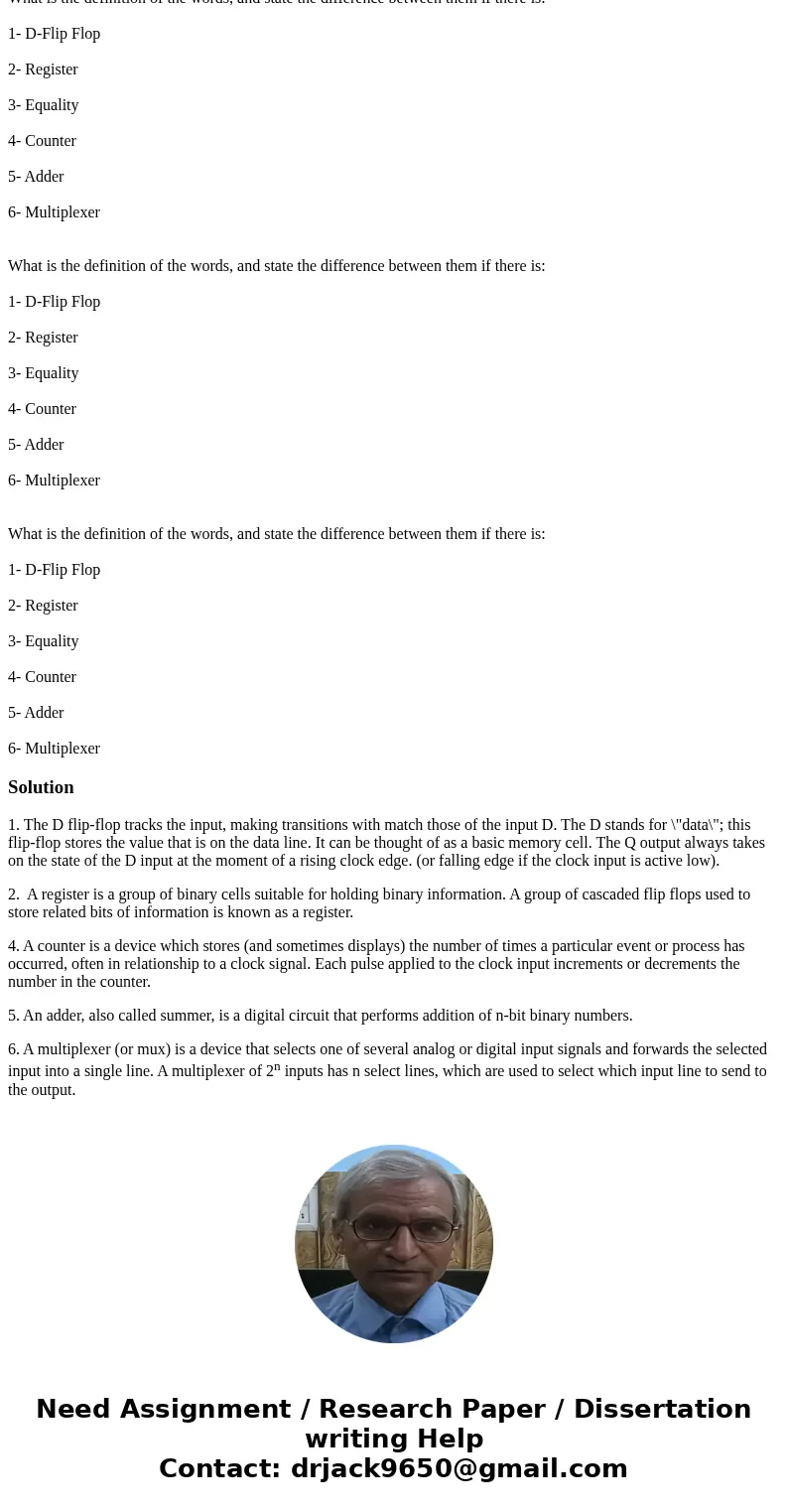What is the definition of the words and state the difference
Solution
1. The D flip-flop tracks the input, making transitions with match those of the input D. The D stands for \"data\"; this flip-flop stores the value that is on the data line. It can be thought of as a basic memory cell. The Q output always takes on the state of the D input at the moment of a rising clock edge. (or falling edge if the clock input is active low).
2. A register is a group of binary cells suitable for holding binary information. A group of cascaded flip flops used to store related bits of information is known as a register.
4. A counter is a device which stores (and sometimes displays) the number of times a particular event or process has occurred, often in relationship to a clock signal. Each pulse applied to the clock input increments or decrements the number in the counter.
5. An adder, also called summer, is a digital circuit that performs addition of n-bit binary numbers.
6. A multiplexer (or mux) is a device that selects one of several analog or digital input signals and forwards the selected input into a single line. A multiplexer of 2n inputs has n select lines, which are used to select which input line to send to the output.


 Homework Sourse
Homework Sourse